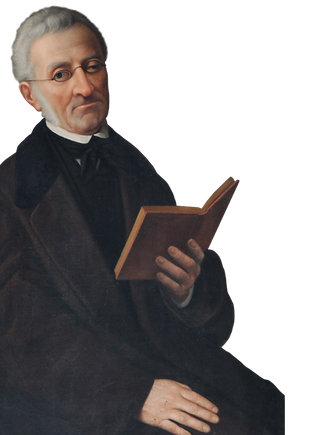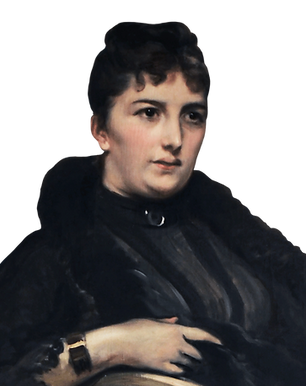

THE HILL OF LABRO WAS CHOSEN BY THE ANCESTOR BERARDO, BETWEEN THE IX AND X CENTURY, TO FOUND THE CASTLE THAT WOULD BECOME THE PLACE OF HIS FAMILY, I NOBILI.
IN 1624, THANKS TO THE MARRIAGE OF GIROLAMO DE'NOBILI WITH VIRGINIA VITELLESCHI, REMAINED THE LAST OF HER FAMILY, THE SURNAME VITELLESCHI WAS ADDED TO THE SURNAME NOBILI.
THE DESCENDANTS OF BERARDO, I NOBILI VITELLESCHI, STILL LIVE IN LABRO, IN A PART OF THE ANCIENT CASTLE.
CHARACTERS








TWO FAMILIES
I NOBILI
They were a branch of the Arroni family. Berardo from Arroni, founder of Labro, was nicknamed "the noble of Labro" and the surname was derived from the nickname, Nobili. For centuries the Nobili family constituted an important reality within a vast territory, and, in Rieti, they held important political positions. In 1357, having come into possession of the feud of Repasto, they enjoyed great privileges connected to the feud itself (possessing jurisdiction authority). The family was always subject to the Empire and participated in numerous battles alongside the Emperor.
I VITELLESCHI
They were an important family, since the year 1000, who came originally from Tarquinia, and known to have prominent figures among their descendants. Some of the most famous figures were Cardinal Giovanni Maria Vitelleschi, who lived in the first half of the 1400s, as the head commander of the papal army. Another famous figure is Muzio Vitelleschi, who was one of Virginia's brothers, wife of Girolamo de'Nobili. In 1600, for almost 30 years, Muzio was the General of the Jesuits and the highest officer of the Order. Another brother of Virginia was Marcantonio, whose descendants had no luck. In fact, at the beginning of the 1600s, the only living heirs were Virginia and her two sons. Accordingly, and at the request of the elderly Vitelleschi relatives, Virginia's sons inherited the entire patrimony of the maternal family on the condition of taking the surname and bearing the coat of arms. So the surname became Nobili Vitelleschi and the two coats of arms were joined to a single one.
1624
THE MARRIAGE
The union of the Nobili and Vitelleschi families was certainly advantageous for the descendants, who could benefit from a better relationship with the Papacy. The inherited assets widened the family's range of action with a significant economic increase. The Vitelleschi had received the title of Count, transmissible to all male descendants, a title that was part of the inheritance. But it seems that it was not appreciated by the heirs, who claimed the title of Marquis, granted in the early decades of 1700 to Francesco Nobili Vitelleschi. In 1800 the family was very rich, until the new system established by Napoleon put an end to the ancient feudal system. Also the law of the major-grader fell, according to which the first-born inherited everything, with the obligation, however, to maintain or provide a suitable dowry for the brothers and sisters, whether they married or entered a convent: the goods were now gone divided among all the children. A generation was enough for the family to lose its wealth: the ancient system had ensured the maintenance of the patrimony that, remaining united, was able to provide for everyone. The partition caused great problems, both because it failed to support the less profitable parts of the land with the contribution of those of higher income, and because none of the heirs had been prepared to administer his property. At the end of the 19th century, the Nobili Vitelleschi family had very little of the enormous heritage of the past.
2021
A TIMELESS PLACE
TODAY LABRO

© Joseph Rigo
One of the most beautiful villages in Italy, preserved and restored with art and passion by architects who have been committed to respecting the medieval characteristics of the place, while bringing the innovations necessary for today's life. The restoration, begun in the 60s of the last century, is almost complete. The architects are still working, always with the same commitment to preserve the original aspect of the village. We mention the architect Ivan Van Mossevelde, Belga, who is responsible for almost all the restorations and Fabio Pitoni that with his projects has contributed to the reactivation of many buildings, among all we remember the restoration of the Theatre and the Convent. If the exterior aspect of the village has remained as in the medieval age was, the restored houses, inside, are beautifully finished and organized, respecting ancient environments but with the taste of simplicity combined with practicality. Labro today offers the opportunity for stays of rest and tranquility along with the possibility of walks and trips in the surrounding area, rich in characteristic places and historically and artistically interesting cities, such as Spoleto, or Rieti and many others. Without neglecting the gastronomic aspect: the restaurants and pizzerias of Labro have the reputation of being among the best in the area.


